Below are some recent publications that provide excellent narratives on rewilding, biodiversity and other related topics. Books are ordered by year of publication (most recent first) and then alphabetically by author surname — all are well worth a read, no matter where they appear on the list!

A Wilding Year – Bringing life back to the land
Hannah Dale, 2025, ISBN-13: 978-1849949385
This is a lovely, intimate and wondrously illustrated account of Hannah and her family’s journey towards a rewilded future on a former arable farm in Lincolnshire. Her descriptions of returning life are lucid and joyous. Buy it for sure as soon as you can. (Review by Derek Gow)

One Garden Against The World – In Search of Hope in a Changing Climate
Kate Bradbury, 2024, ISBN-13: 978-1399408868
Aware of how climate change is increasingly impacting the plants and animals in her local area, Kate Bradbury is determined that her garden will be a haven for wildlife. In this book she describes how in the face of prolonged drought, elevated temperatures, and only occasional rain, she cares for her beloved hedgehogs, plants and diminishing pondlife. Along the way, Kate shares a wealth of practical suggestions that anyone wishing to increase the wildness of their own garden, be it small or large, could deploy. ‘Wake up and do something to support the wild world’ is the compelling message of this book! (Review by Jenny Watson)

Raising Hare
Chloe Dalton, 2024, ISBN-13: 978-1805302711
I wouldn’t normally be tempted to read a book by a former political advisor, especially one about a single species not known to have “keystone” status. However, this book is beautifully written showing in detail the awe and wonder of nature. The tale of a relationship started by a single decision demonstrates what can happen when nature is allowed to take the lead: something that should enchant any rewilder. (Review by Jeff Davitt)

Birds, Beasts and Bedlam – Turning My Farm Into an Ark for Lost Species
Derek Gow, 2024, ISBN-13: 978-1915294616
This is an engaging and personal look at the challenges of reintroducing Britain’s extinct or threatened native animals, such as wild boar and water vole, to the wild. The book combines humour with serious reflections on the difficulties of balancing nature and human influence. Gow’s writing is down-to-earth and full of passion. It offers a behind-the-scenes glimpse into the messiness of the reintroduction work he has trail-blazed with lots of eccentric characters brought to life from his years battling red tape and prejudice. It’s a mix of triumphs, failures, and the unpredictable nature of working with wildlife beyond the beavers he’s most famous for. (Review by Sammy Mennell)

Hunt for the Shadow Wolf:The Lost History of Wolves in Britain and the Myths and Stories that Surround Them
Derek Gow, 2024, ISBN-13: 978-1645020424
It is a long time since there were wild wolves in Britain – but perhaps not as long ago as we might think. Derek Gow has first hand experience working with and rearing wolves. In this book he looks at evidence in historical records, folklore and the landscape to reveal how this native species once shared the land with our ancestors. And, soberingly, how it was demonised and exterminated. However, across Europe wolves are returning to their old haunts and there are signs that humans are willing to create a whole new relationship with this remarkable animal. (Review by Debbie Davitt)

Hedgelands: A wild wander around Britain’s greatest habitat
Christopher Hart, 2024, ISBN-13: 978-1915294197
The inspiration for this book is Jonathan Thomson’s hedge at Underhill Wood Nature Reserve in Wiltshire which has seen a ‘truly spectacular’ explosion of wildlife after it was ‘conservation laid’. The book is a passionate guide to the history, ecology and value of our hedges, but it is also a call to action. There are 400,000 kilometres or more of hedge in England which, if rescued from the annual flail and managed sensitively, would produce a rapid improvement in everything from carbon capture to the creation of rich habitat for birds, reptiles and mammals. Conservation or rough hedging is far simpler than traditional hedge laying and produces a dense, scruffy hedge with wide skirts. This book has encouraged us to have a go on our own hedges and I’ll hopefully be blogging about how we get on. (Review by James Wood)

Groundbreakers
Chantal Lyons, 2024, ISBN-13: 978-1399401623
In this book Lyons creates a wonderful balance between scientific research and her personal encounters with wild boars. She tells stories of how boars are interacting with both the ecosystem and local communities. The wild boars only returned to our landscape 30 odd years ago after being hunted to extinction centuries ago. Lyons’ insights into their family dynamics are fascinating and show us how much we have yet to learn about these elusive, yet brave creatures. I was struck by Lyons’ love and respect for these animals. If introduced in the right areas and managed properly, they can be effective eco-engineers. (Review by Neilan Mylvaganam)

Black Ops and Beaver Bombing: Adventures with Britain’s Wild Mammals
Fiona Mathews and Tim Kendall, 2024, ISBN-13: 978-0861548002
This book describes a couple travelling around the UK seeking out some of Britain’s native mammals, accompanied by a description of the creatures’ history and prospects. It has a lovely balance of highly credible science and story-telling, either of which can be lacking in some narratives. The text shows what would be possible for these wonderful species if only bureaucracy and cultural norms would allow it, as well as some of the barriers to enabling them to thrive. (Review by Jeff Davitt)

Natures Ghosts
Sophie Yeo, 2024, ISBN-13: 978-0008474126
In this book Sophie Yeo looks back in time and through a lens of paleoecology – the ecology of fossil animals and plants. She raises some interesting ideas about the role of humans in rewilding landscapes, the importance of medieval farming systems and our role as ecosystem engineers. In places the author is challenging of UK Rewilding and at times these feel more divisive than constructive, but it’s well researched and obviously written with a lot of love for nature. There is a wonderful chapter on shifting baselines which really brings the concept to life. Sophie is talented at communicating complex science in an easy-to-read way. However, the book assumes a basic knowledge of Rewilding so maybe one to pick up after you have read some of the other rewilding classics, or if you have a particular interest in paleoecology. (Review by Sarah Mason)

The Flow
Amy-Jane Beer, 2023, ISBN-13: 978-1472977403
The Flow is a beautifully written and often poetic book on our connection to rivers, streams and lakes. It tells stories about the species that live here, as well as the people – their successes and hardships. Journeying through the landscape of a different watercourse for each of its chapters, many Yorkshire rivers get the spotlight. This is not just an exploration of nature but of history, culture, geography and ecology. There is a general sense of wonder at how that flowing water and how human lives have been so interconnected throughout time. (Review by Claire Green)

Rewilding the Sea: How to Save our Oceans
Charles Clover, 2023, ISBN-13: 978-1529144055
Rewilding authors seem to have an uncanny knack for writing ‘unputdownable’ books and this is yet another one of those. In the true spirit of rewilding, both in terms of the science and the movement overall, this book focusses almost exclusively on positive outcomes. It highlights examples of people and projects that have made huge and positive impacts on otherwise highly exploited and damaged ecosystems. Some of the best examples are from our own British coastline where low impact fishers have been critical in catalysing the rapid recovery of some otherwise destroyed marine habitats and ecosystems. As well as getting a strong feel for how much of a contribution the author himself has made to global coastal and oceanic rewilding, you’ll also learn a bit about the peat bogs under the central North Sea! (Review by John Hartshorn)

The Rewilding Manual for Schools – A guide to restoring nature in your school grounds
Lesley Malpas, 2023, ISBN-13: 979-8374056716
Are you a pupil, a parent, a teacher or a caretaker or know someone who is? If so, consider taking a look at this very readable guide to rewilding schools. It’s full of simple ideas and resources to transform the whole of the school including grounds, boundaries, courtyards and the people who work and learn there. Rewilding is more than ecology, it’s about addressing cultural change and this book shows how to engage pupils in rewilding principles and how we can all become guardians for nature. An amazing suite of free, online teaching modules is also available from Operation Future Hope (founded by the author) to complement this excellent book which could be the catalyst for community rewilding near you. (Review by Debbie Davitt)

Forget me not
Sophie Pavelle, 2023, ISBN-13: 978-1472986238
In Autumn 2020 , at the height of the pandemic, Sophie Pavelle embarked on a mission to tour the UK to visit the habitats of 10 species threatened by climate change. In this book she recounts the challenges of searching out elusive species in their remaining strongholds and discusses their plight with a range of experts. Sophie’s engaging and informal writing style belies the utter seriousness of this book and the thoroughness of her research. For rewilders it is worth reading for the section on dung beetles alone! (Review by Jenny Watson)

The Book of Wilding – A practical guide to rewilding big and small
Isabella Tree and Charlie Burrell, 2023, ISBN-13: 978-1526659293
The long-awaited practical manual on rewilding from the author of ‘Wilding’. This is a doorstop of a book but that’s because it is so comprehensive. It covers all aspects of the rewilding process and the context for many of the choices that are faced. It should prove to be a great resource for all rewilders, not one to carry around perhaps but definitely one to be dipped into for information, ideas and inspiration. (Review by Debbie Davitt)

Cornerstones: Wild Forces That Can Change Our World
Benedict Macdonald, 2022, ISBN-13: 978-1472971609
Another excellent book from this author, this time about a number of species that have a disproportionate impact (mainly positive!) on the ecosystems in which they live and which they help to create and maintain. Although some of the background scene-setting can be a bit down-heartening, specifically when it comes to how ecologically degraded our natural ecosystems have become, the style of writing is immensely engaging and it paints such a vivid picture of what the future could look like and so quickly, too. Whilst not a text book, a bibliography is provided for each chapter should the reader want to delve more deeply. (Review by John Hartshorn)

Wild Fell: Fighting for nature on a Lake District hill farm
Lee Schofield, 2022, ISBN-13: 978-0857527752
This accessible book opens with Lee’s account of his search for rare plants on Harter Fell, which are now confined to a few craggy refuges beyond the reach of grazing sheep. Haunted by the loss of the wildflower rich landscapes that had once been common across the lake District, Lee travels to projects within the UK and abroad, to learn about approaches that allow farming and nature to co-exist. As he rightly observes, the loss of flower abundance is as important as the loss of plant biodiversity because it results in a greatly reduced food source for butterflies, bees and other pollinators. This loss then has a negative impact on all creatures in the food chain.
In Lee’s words, ‘a landscape of flowers is a landscape of hope’ – his hope is that RSPB Haweswater will recover to the point that it will provide a home for golden eagles once again. (Review by Jenny Watson)

The Most Important Comic Book on Earth: Stories to Save the World
Cara Delevingne, Ricky Gervais, Jane Goodall, Scott Snyder, Taika Waititi, 2021, ISBN-13: 978-0241513514
This is an unusual book in that it is set out as a collection of cartoons. It’s a funny, moving and inspiring set of thoughts and stories which makes a insightful coffee table book. It’s one the whole family can enjoy and read together. A collaborative book that offers hope and will hopefully inspire some actions. (Review by Sarah Mason)

Regeneration: The Rescue of a Wild Land
Andrew Painting, 2021, ISBN-13: 978-17802771411912235889
Another book that’s written in such a natural style and tone that it can seem to transport you right to the location at which it’s entirely focussed – in this case, National Trust for Scotland’s huge Mar Lodge Estate in the Cairngorms. It talks through many of the land management practices and activities that resulted in much of the area becoming ecologically damaged over many years, and then how 25 years of hard work and careful management have been hugely successful and have led to regeneration and recovery. With some great humour and turns of phrase, Andrew also discusses some topics that, for some, are quite controversial. But there is a very positive tone to it and it paints a wonderful picture of what a regenerated area can look like and what it might contain, including people. Definitely one to read! (Review by John Hartshorn)

Cottongrass Summer: Essays of a naturalist through the year
Roy Dennis, 2020, ISBN-13: 978-1912235889
This is a collection of 52 short essays by someone who has been a leader in conservation for over 60 years. It’s a thoroughly absorbing book, and every essay is a compelling read to the point that I struggled to put this book down until I’d finished it. It also doesn’t shy away from some of the more challenging issues facing our natural world and there is an undertone that screams “stop messing about and just get on with it!” (Review by John Hartshorn)

English Pastoral: An Inheritance
James Rebanks, 2020, ISBN-13: 978-0241245729
Rebanks’ latest book takes us full circle from when he first fell in love with farming on his grandad’s mixed, rotational upland farm, to the present, when he has found again a deep understanding of the land and a desire to make it a haven for all life. Along the way, he shows how the gradual intensification of the small farms of Cumbria had such a destructive effect not only on wildlife but also on the lives of the families and communities that had always been so intricately bound up with the health of the land. By giving us the perspective of a working farmer, he explains how small farms were dragged into the ‘new way’ whether they wanted to or not. No-one set out to exclude natural processes, but over time they could see how much was lost – and now the tide seems at last to be turning back towards smaller scale, wildlife-friendly farming again. (Review by Jessica Penrose)

Bringing Back the Beaver – The Story of One Man’s Quest to Rewild Britain’s Waterways
Derek Gow, 2020, ISBN-13: 978-1603589963
This book is the story of the Eurasian beaver in Britain, from it’s persecution to the point of extinction some 400 years ago, through to the sometimes shocking and extraordinary barriers and bureaucracy that have hindered its reintroduction in modern times. It is, however, a story of hope, determination and optimism – and, at times, sheer bloody mindedness! There can’t be much that Derek Gow doesn’t know about beavers, and his respect for and appreciation of this animal shines through. This book explains why this keystone species has such an important role to play in rewilding. Derek has been at the forefront of the reintroduction efforts and tells his tale with humour and aplomb. (Review by Debbie Davitt)

Rewilding: The Radical New Science of Ecological Recovery
Paul Jepson and Cain Blythe, 2020, ISBN-13: 978-1785786273
A short and readable book that summarises the thinking and science behind rewilding. If that sounds a bit heavy, it’s not. This book explains really well how this new ecological approach is different from existing attitudes to conservation and how and why it can feel threatening to some people. The final chapter boldly gives ten predictions for the future of rewilding, which suggests this outsider will soon become mainstream. (Review by Debbie Davitt)
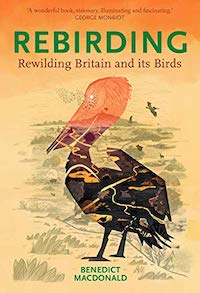
Rebirding
Benedict Macdonald, 2020, ISBN-13: 978-1784271879
Winner of the 2020 Wainwright Price for Writing on Global Conservation, this is a stunningly good book that just flows well from section to section, backing every assertion and anecdote up with other referenced publications. Many readers will go through everything from despondence to hope whilst reading this. (Review by John Hartshorn)

Rewild Your Garden – Create a Haven for Birds, Bees and Butterflies
Frances Tophill, 2020, ISBN-13: 978-1529410259
A great book for gardeners of all levels who want to learn how to share their plot with wildlife. It is clearly set out with lots of useful information and practical tips, not too daunting, easy to dip into and full of colourful, charming illustrations. For many of the common garden activities Frances explains and compares the different approaches of ‘traditional gardening’, ‘wildlife gardening’ and ‘full rewilding’. This is really helpful and allows the reader to choose for themselves how much – or little – intervention they are comfortable with and how to deal with one part of their garden at a time.
This attractive book would make an excellent gift. (Review by Debbie Davitt)

Braiding Sweetgrass: Indigenous Wisdom, Scientific Knowledge and the Teachings of Plants
Robin Wall-Kimmerer, 2020, ISBN-13: 978-0141991955
A fascinating and very thought-provoking book. Intertwining stories from her own experience, Wall-Kimmerer shows us how indigenous ways of relating to the plant world, of seeing all of its gifts and lessons for us as humans, have informed and deepened both her scientific knowledge and her life. It is a book written with love and with grace. The result is a fresh, timeless insight on how we interact with the world we are a part of, how we try to make sense of it and how we choose to treat it. (Review by Debbie Davitt)
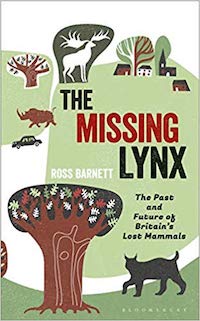
The Missing Lynx
Ross Barnett, 2019, ISBN-13: 978-1472957344
This one talks through the megafauna that we’ve had and lost since our species’ arrival in the UK (and elsewhere), bringing it vividly to life and pointing the finger of blame squarely at ourselves as the main suspect behind its demise. There is humour throughout, despite the sorry tales of woe it lays before us, and Ross’s writing style is very natural and highly engaging. (Review by John Hartshorn)
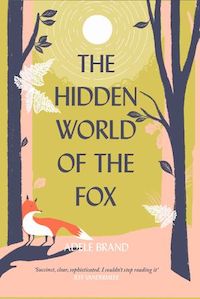
The Hidden World of the Fox
Adele Brand, 2019, ISBN-13: 978-0008327286
Really informative with a very natural narrative style and some excellent observational humour. (Review by John Hartshorn)

Rewilding (Ecological Reviews)
Nathalie Pettorelli (Editor), Sarah M. Durant (Editor), Johan T. du Toit (Editor), 2019, ISBN-13: 978-1108460125
A very recent collection of 20 papers from leading academics in the field of ecological restoration and rewilding. An excellent read if you want to develop a good, objective grasp of the history, science, and social aspects of rewilding. Expect a more academic style of writing as compared to some of the other books on the list. (Review by John Hartshorn)
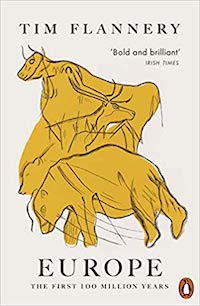
Europe: The First 100 Million Years
Tim Flannery, 2019, ISBN-13: 978-0141989020
Structured into a fairly large number of short chapters makes this a “just one more chapter before…” sort of a read. A fascinating history down the eons, with a wonderful time machine that really helps paint a picture of landscapes, fauna, and flora long gone. Another book that might be really hard to put down. (Review by John Hartshorn)
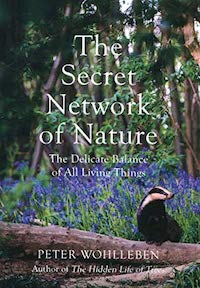
The Secret Network of Nature
Peter Wohlleben, 2019, ISBN-13: 978-1784708498
A wonderful and often humorous book detailing interconnectivity of everything in the natural world, from a well known author and forester based in Germany. (Review by John Hartshorn)
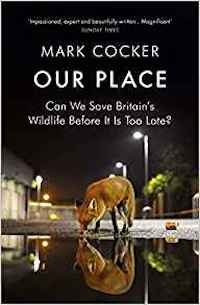
Our Place – Can We Save Britain’s Wildife Before It Is Too Late?
Mark Cocker, 2018, ISBN-13: 978-0224102292
A very informative book, particularly in relation to how much of the UK came to be owned and controlled by so few. It has quite a serious tone and there is quite a large amount of information and a number of referenced clarifications that you’re directed to in the main body of the text. (Review by John Hartshorn)
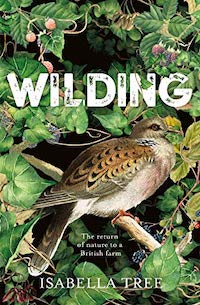
Wilding – The return of nature to a British farm
Isabella Tree, 2018, ISBN-13: 978-1509805099
Considered to be one of the definitive narratives on modern rewilding, this is an inspiring case study that describes how natural processes can re-establish and nature can return, whilst also creating viable new opportunities for the land owner. (Review by John Hartshorn)
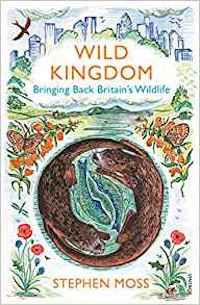
Wild Kingdom
Stephen Moss, 2017, ISBN-13: 978-0099581635
This one from the original producer of BAFTA award-winning TV series Springwatch reminds us of all the problems that wildlife faces in the UK. However, it presents many examples of more positive changes that are happening, and it’s written in a lovely, informal style. (Review by John Hartshorn)

What Nature Does For Britain
Tony Juniper, 2015, ISBN-13: 978-1781253281
For fans of ‘natural capital’ and ‘ecosystem services’, this excellent book explains about all the free-of-charge work that nature does for us here in Britain, and yet all the damage we do to that nature and the natural systems that we rely on. It provides some great examples of how this damage can be, and is being, put right for both our health and wellbeing, as well as that of our economy and, of course, nature itself. (Review by John Hartshorn)

Sapiens – A Brief History of Humankind
Yuval Noah Harari, 2014, ISBN-13: 978-1846558238
A different perspective on rewilding – this book is fascinating insight into the history of human beings. The first half of the book in particular details the relationship between early humans and megafauna and the impact of the agricultural revolution on land use and the natural environment. It’s a great book to help understand how we got to where we are now and just how long the biodiversity crisis has been going on! (Review by Sarah Mason)
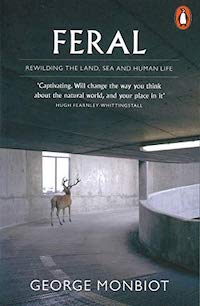
Feral: Rewilding the Land, Sea and Human Life Paperback
George Monbiot, 2014, ISBN-13: 978-0141975580
This is a pulls-no-punches, often controversial and divisive narrative about many of the problems that underpin biodiversity loss. Given it’s publication date of 2014, this is probably the original high profile scene-setter. (Review by John Hartshorn)

Never Cry Wolf – The Amazing True Story of Life Among Arctic Wolves
Farley Mowat, 1996, ISBN-13: 978-0316881791 (reprint edition. Originally published 1963)
This is a terrific book if you want to find out what wolves are really like. It’s a first-hand account of a biologist who is sent on a mission by Government bureaucrats to investigate ‘the wolf problem’ in subarctic Canada in 1948. What follows is a highly entertaining story of the months spent studying and following wolves and gaining an insight into their complex lives. A species that is much maligned by humans, Mowat’s newfound respect for them shines through. (Review by Debbie Davitt)

